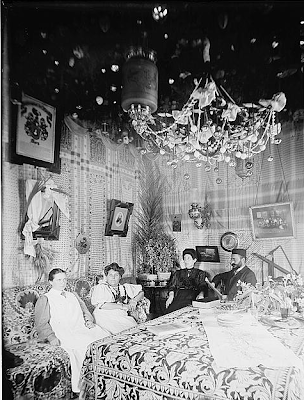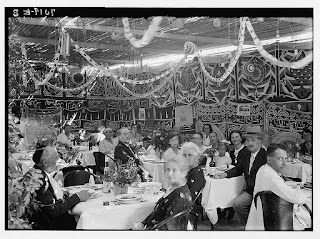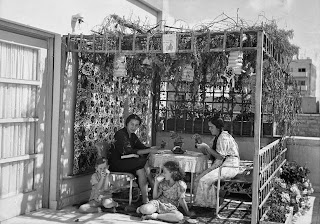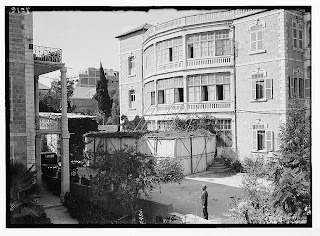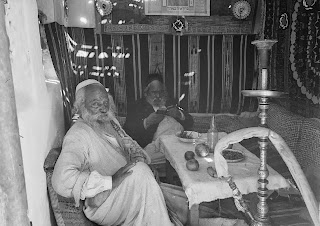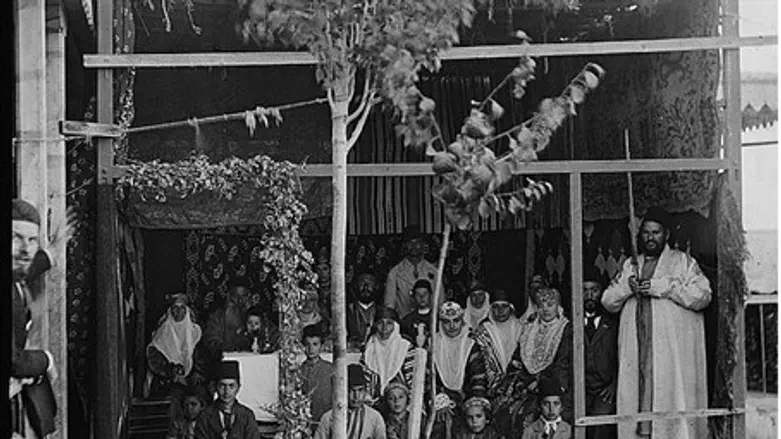
As soon as the Yom Kippur fast day is over many Jews start preparations for the Sukkot (Tabernacles) holiday. It usually involves building a sukkah, a temporary structure -- sometimes just a hut -- with a thatched roof, in which Jews eat and often sleep during the seven day holiday.
On the main page and to the right here is a Bukharian family in their sukkah (circa 1900). Note the man on the right holding the citron and palm branch.
(Library of Congress collection)
Ashkenazi family (circa 1900) in the sukkah
beneath the chandelier and picures
Several photographs include the Jewish celebrants holding four species of plants traditionally held during prayers on the Sukkot holiday -- a citron fruit and willow, myrtle and palm branches.
Even though the sukka is a temporary structure, some families moved their furniture and finery into the sukka, as is evident in some of the pictures.
Bukharian Jews were part of an ancient community from what is today the Central Asian country Uzbekistan. They started moving to the Holy Land in the mid-1800s.
A more elaborate sukkah in the Goldsmidt house (1934)
in Jerusalem. Note the tapestry on the walls
with Arabic script
Exterior of the Goldsmidt sukkah in Jerusalem (1934)
A Sephardi Jew named Avram relaxing in
his Sukkah with a friend (1939)
Presumably the Goldsmidts and their guests didn't know about the Arabic phrases either.
A reader helped identify the Goldsmidts' building. "The Goldsmidts were friends of ours who lived on Ben-Maimon Street [in Jerusalem]. They had a restaurant [and that explains the diners in the sukka]. Our wedding reception was there. There's a plaque on 54 King George Street that says "Goldsmidt Building."
